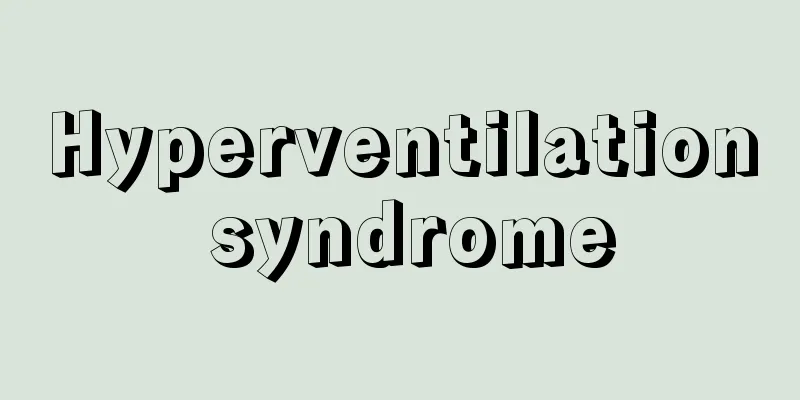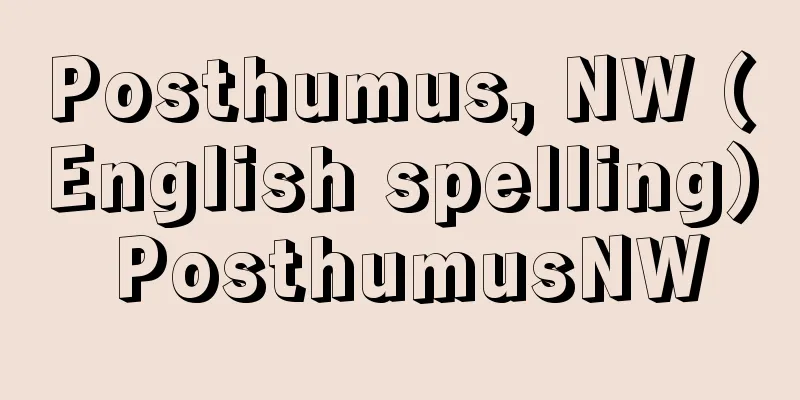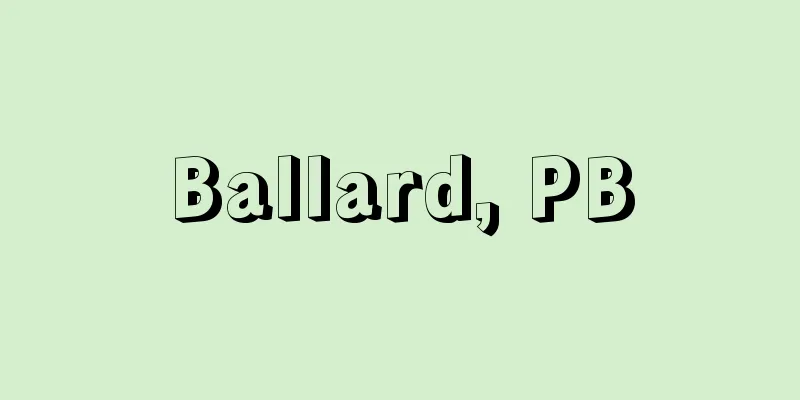Hyperventilation syndrome

|
What kind of disease is it? Main symptoms and progression Hyperventilation syndrome is a condition in which, even though there is no particular physical illness, a person suddenly experiences repeated hyperventilation attacks that cause shortness of breath, palpitations, tachycardia, dizziness, and numbness in the face and limbs. The attacks last about 30 to 60 minutes and subside naturally. However, because they feel as if no air is coming in when they breathe, they are overcome by strong anxiety that they may die, and they are often taken to the hospital by ambulance. The whole body may convulse and the person may lose consciousness, but the seizures will usually have subsided by the time the person arrives at the hospital. In the chronic type, where attacks occur repeatedly, the patient is more likely to feel symptoms such as numbness in the face and limbs, dizziness, headache, fatigue, back pain, and anxiety than respiratory symptoms such as shortness of breath. ● Causes of disease and mechanisms of symptoms When mental or physical stress causes you to breathe shallowly too much, a lot of carbon dioxide in the blood is expelled during exhalation, and the pH of the blood becomes alkaline. This is called respiratory alkalosis. This condition causes various symptoms and can lead to hyperventilation syndrome, which can then lead to attacks. Furthermore, attacks can increase anxiety and fear, which can lead to even more hyperventilation, creating a vicious cycle. It is believed that people who are sensitive to changes in the amount of oxygen and carbon dioxide in their blood are more likely to suffer from hyperventilation syndrome. In addition, because hyperventilation syndrome can also be caused by panic attacks, it is treated with anti-anxiety drugs and antidepressants. ●Characteristics of the disease It is more prevalent in young women, more than twice as prevalent as in men. However, the number of young men is also increasing recently. The majority of cases occur in people in their 20s, but it is not uncommon to see people in their 30s and 40s. Attacks vary from patient to patient, with some having more than two attacks per month and others only having about two attacks per year. EBM checks on common treatments and care [Treatment and care] Paper bag rebreathing technique can help calm seizures [Rating] ☆☆ [Evaluation Points] In the past, people would cover their nose and mouth with a paper bag and breathe to increase the amount of carbon dioxide in their blood. However, it has now been reported that this method reduces the amount of oxygen in the blood and can cause side effects. If you use this method, it is recommended that you always use a machine that measures the amount of oxygen in the blood (a pulse oximeter). (1)(2) [Treatment and care] Anti-anxiety medication is used to calm attacks [Rating] ☆☆ [Evaluation points] Anti-anxiety drugs may be administered intravenously to calm anxiety attacks (hyperventilation syndrome). [Treatment and care] Prevent relapse through behavioral therapy and education [Evaluation] ☆☆☆ [Evaluation Points] Behavioral therapy and education are provided to help patients realize that hyperventilation syndrome is not a serious illness and that there is nothing abnormal with their lungs or heart. These treatments have been suggested to be useful in preventing recurrences not only in the short term, but also in the long term. However, there are few large-scale studies, and further research is expected. (3)-(5) [Treatment and care] Preventing attacks with anti-anxiety drugs [Rating] ☆☆ [Evaluation Points] Anti-anxiety medication for hyperventilation syndrome has been shown to have the potential to prevent short-term recurrence. There are reports that it is as effective as the behavioral therapy described above, but research is still insufficient. (6) Checking commonly used drugs with EBM Anti-anxiety medication [drug name] Xanax/Constan (alprazolam) [Rating] ☆☆ [Drug name] Melax (ethyl loflazepate) [Rating] ☆☆ [Drug name] Depas (Etizolam) [Rating] ☆☆ [Drug name] Rize (clotiazepam) [Rating] ☆☆ [Evaluation points] Depending on the symptoms, anti-anxiety medications with a short or long duration of action will be used. Overall, it is currently the most reliable treatment method. <br /> Make sure that it is not another illness and understand the illness. Patients who experience a hyperventilation attack for the first time feel extremely anxious, as they suddenly have difficulty breathing, palpitations, and a rapid pulse. If they think that they will die, that they have a serious, life-threatening illness, or that they will suffer another attack like that, their anxiety will increase, which will cause stress and may even lead to another attack. It is important to understand and accept the illness so as not to create a vicious cycle of anxiety and attacks. Of course, it is also important to make sure that there are no physical illnesses, such as circulatory system illnesses. Caution required when using the paper bag rebreathing method Paper bag rebreathing method, in which a paper bag is placed over the nose and mouth and the person breathes into it, is sometimes used to treat hyperventilation attacks. It is believed that by inhaling the carbon dioxide exhaled into the bag again, the carbon dioxide lost from the body is replenished and various symptoms can be eliminated. However, there have been reports of a decrease in oxygen in the blood and side effects. When a doctor uses this method, it is recommended that they use a machine that measures oxygen in the blood (a pulse oximeter). It is safest to use the method by creating a gap at the edge of the bag so that it is not completely sealed. Use of anti-anxiety drugs and antidepressants If necessary, anti-anxiety drugs are administered intravenously or orally. In patients who have recurrent hyperventilation attacks due to depression or anxiety neurosis, anti-anxiety drugs may be used for a while. Regular visits with a trusted doctor and gradual efforts to address stressors and triggers in your life are also recommended. (1)Morgan WP. Hyperventilation syndrome: a review. Am Ind Hyg Assoc J. 1983;44:685-689. Source: "EBM: A book that explains correct treatment" Information about the book "EBM: A book that explains correct treatment" |
|
どんな病気でしょうか? ●おもな症状と経過 とくに身体的な病気がないのに、突然、息が苦しくなって、動悸(どうき)、頻脈(ひんみゃく)、めまい、顔面や手足のしびれなどを引きおこす過換気発作(かかんきほっさ)をなんどもくり返す状態を過換気症候群といいます。 発作の時間は30~60分間程度で、自然におさまります。ただし、息をしても空気が入ってこないような感じがするために「このまま死ぬのではないか」という強い不安に襲われ、救急車で病院に運ばれることも少なくありません。 全身がけいれんして意識を失うこともありますが、病院に着いたころには発作がおさまっているのがふつうです。 なんども発作をくり返す慢性型になると、息が苦しいなどの呼吸症状よりも、顔面や手足のしびれ、めまい、頭痛、疲れやすさ、腰痛、不安感といった症状を強く感じるようになります。 ●病気の原因や症状がおこってくるしくみ 精神的・身体的なストレスが元になって、はあはあと浅い呼吸を過度にくり返すと、血液中の二酸化炭素が呼気中に多く排出され、血液のpH(ペーハー)がアルカリ性に傾きます。これを呼吸性アルカローシスといいます。 この状態が元になって、さまざまな症状が現れ、発作につながるのが過換気症候群です。また、発作がおこると不安や恐怖が増して、いっそう過度な呼吸をするようになり、悪循環に陥ります。 血液中の酸素・二酸化炭素の量の変化に敏感な体質の人が過換気症候群になりやすいと考えられています。また、過換気症候群はパニック発作によるものもあるため、抗不安薬や抗うつ薬などの治療を行うことになります。 ●病気の特徴 若い女性に多く、男性の2倍以上です。ただし、最近は若い男性も増える傾向にあります。20歳代が発症の中心ですが、30歳代、40歳代の人も珍しくはありません。発作は月に2回以上ある場合や、年2回程度にとどまる場合など、患者さんによってさまざまです。 よく行われている治療とケアをEBMでチェック [治療とケア]紙袋再呼吸法(かみぶくろさいこきゅうほう)で発作をしずめる [評価]☆☆ [評価のポイント] 以前は、紙袋で鼻と口を覆(おお)って呼吸し、血液のなかの二酸化炭素を増やす方法が用いられていましたが、現在はそれにより血液のなかの酸素が減り、副作用がおこることが報告されています。もしこの方法を行う場合は、必ず血液中の酸素を測る機械(パルスオキシメーター)を使用することが勧められています。(1)(2) [治療とケア]抗不安薬を用いて発作をしずめる [評価]☆☆ [評価のポイント] 不安発作(過換気症候群)をしずめる目的で、抗不安薬の静脈注射を行うこともあります。 [治療とケア]行動療法と教育により再発予防を行う [評価]☆☆☆ [評価のポイント] 過換気症候群は重病ではなく、肺にも心臓にも異常がない状態であることを患者さん自身が自覚できるように、行動療法と教育を行います。これらの治療は、短期的な再発予防のみならず、長期的な再発予防にも役立つことが示唆されています。しかし大規模な研究は少なく、これからの研究が期待されます。(3)~(5) [治療とケア]抗不安薬で発作を予防する [評価]☆☆ [評価のポイント] 過換気症候群に対する抗不安薬による治療は、短期的な再発を予防する可能性が示唆されています。上記の行動療法と同程度の効果があるとする報告がありますが、まだ研究が十分とはいえません。(6) よく使われている薬をEBMでチェック 抗不安薬 [薬名]ソラナックス/コンスタン(アルプラゾラム) [評価]☆☆ [薬名]メイラックス(ロフラゼプ酸エチル) [評価]☆☆ [薬名]デパス(エチゾラム) [評価]☆☆ [薬名]リーゼ(クロチアゼパム) [評価]☆☆ [評価のポイント] 症状に合わせて、作用時間の短い抗不安薬から長い抗不安薬までを使い分けます。 総合的に見て現在もっとも確かな治療法 ほかの病気でないことを確認し、この病気を理解する 突然息が苦しくなったり、動悸がしたり脈が速くなったりしますので、はじめて過換気発作を経験した患者さんは非常に強い不安感をもちます。このまま死んでしまうのではないか、生命にかかわる深刻な病気なのではないか、そして、またあのような発作に襲われるのではないかと思うと、不安が強まり、それがストレスになって、さらに次の発作を誘いかねません。 このような不安と発作の悪循環を招かないように、病気を理解し、受け入れることが大切です。もちろん、循環器など体の病気がないことも確認する必要があります。 紙袋再呼吸法には注意が必要 過換気発作に対して、紙袋を鼻と口にあてて呼吸する紙袋再呼吸法が行われることがあります。紙袋のなかに吐きだされた二酸化炭素を再度吸い込むことによって、体内から失われた二酸化炭素が補われ、さまざまな症状を消失させることができると考えられています。ただし、血液中の酸素が減り、副作用がおこるとの報告もあります。医師がこの方法を行う場合は、血液中の酸素を測る機械(パルスオキシメーター)を使用することが勧められます。袋の端に隙間をつくり、完全に密封状態にならない工夫をして行うのが安全でしょう。 抗不安薬や抗うつ薬の使用も 必要に応じて、抗不安薬を静脈注射か内服で用います。過換気発作の背後にうつ病や不安神経症があって発作をくり返す患者さんでは、抗不安薬をしばらく用いることもあります。 信頼できる医師に定期的に受診しながら、生活上のストレスや誘因となるできごとへの対処を徐々に行うことも勧められます。 (1)Morgan WP. Hyperventilation syndrome: a review. Am Ind Hyg Assoc J. 1983;44:685-689. 出典 法研「EBM 正しい治療がわかる本」EBM 正しい治療がわかる本について 情報 |
<<: "Flower Collection" - Kakanshu
>>: Commutative ring - Kakankan (English spelling)
Recommend
Living spirit - Ikimitama
…There are no records of gift-giving on this day ...
Environment - Kankyo (English spelling) environment English
Environmental Concept Environment and Subjects Th...
Sword dragon - Kenryu
A group of dinosaurs belonging to the order Ornith...
Laminated lumber - Shuseizai (English spelling) Laminated lumber
Laminated lumber is made by drying sawn boards (l...
polar axis
…In multicellular plants, especially vascular pla...
Muḥammad b.Ṭughj (English spelling) Muhammad b Tughj
…935-969. The name of this dynasty arose from the...
Kawaba [village] - Kawaba
A village in Tone County, northeastern Gunma Prefe...
Sharon-leaf of Sharon
This moth belongs to the order Lepidoptera and th...
Jacaranda - Jacaranda
A general term for the genus Jacaranda in the Big...
Ibn Taghrībirdī
Around 1409-70 An Egyptian historian from the Maml...
Euhadra peliomphala simodae (English spelling) Euhadrapeliomphalasimodae
…[Tadashige Nabe]. . … *Some of the terminology t...
Masachika Asukai
Year of death: Entoku 2.12.22 (1491.1.31) Year of ...
Earthquake fault - jishin danso
A fault that appears on the earth's surface a...
Snow Window - Sesso
A Zen monk and painter active in the first half of...
Sake cup - Ochoko
...It is a type of cup, usually a small ceramic v...





![Machida [city] - Machida](/upload/images/67cce649a7b84.webp)



